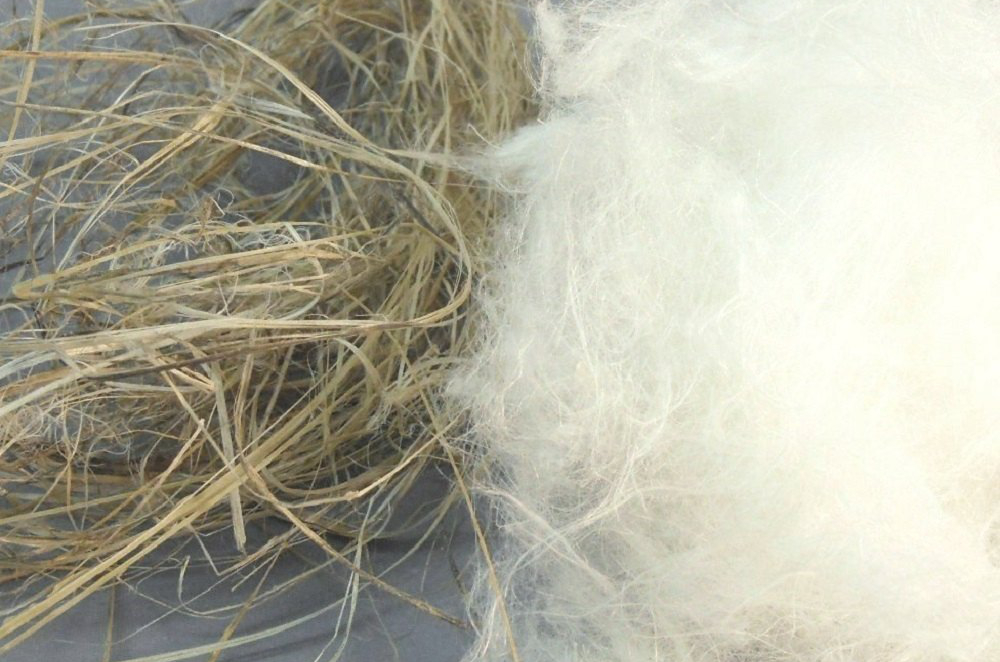A new research breakthrough reframes hemp fiber not as a niche material requiring dedicated infrastructure, but as a viable, cotton-compatible input that can be spun using standard machinery. The findings could significantly reduce barriers for hemp in the global textile supply chain—and unlock value from agricultural waste streams.
A team from the University of Zagreb’s Faculty of Textile Technology demonstrated that hemp by-products, when treated with a combined mechanical-chemical cottonization process, can be blended with cotton and spun on open-end rotor systems. Their work, published in Cellulose, a peer-reviewed journal from Springer Professional, addresses the key technical challenge that has long excluded hemp from conventional spinning: the irregularity, stiffness, and lignin content of bast fibers.
The researchers applied peroxide-based chemical treatments and mechanical refinement to transform post-extraction hemp biomass—typically discarded—into stable, short fibers with improved spinnability. The result: blended yarns that passed tensile strength tests and could be processed using industrial-scale cotton spinning equipment.
Closing the infrastructure gap
The implications are potentially far-reaching. Most natural bast fibers, like flax and traditional hemp, are processed through specialized lines for long fiber wet spinning—equipment that is capital-intensive, geographically limited, and ill-suited to mass-market apparel or home textiles. That has kept hemp fiber largely locked out of commodity textile channels, even as demand for sustainable inputs rises.
“This is a bridge-building study,” said Joseph Carringer, CEO of Canna Markets Group, which tracks commercial applications of industrial hemp. “It connects the raw biomass end of hemp production with the mature infrastructure of textile spinning, which is essential if hemp is going to play a meaningful role in global fiber supply.”
For mill operators and apparel brands, the research opens the possibility of integrating hemp blends without overhauling equipment. For hemp processors, it signals a chance to monetize fiber waste—often the least valued output of the crop—by transforming it into a saleable raw textile input.
“It opens up the opportunity for otherwise unusable fiber to be used in textile applications,” Carringer said. “The cost logic shifts dramatically when you start seeing such material as inputs for yarn.”
The study’s focus on cottonization—softening and shortening bast fibers to mimic cotton’s properties—responds to commercial realities. Long fiber hemp, while the highest quality input for textile-grade yarn, is essentially unavailable because there are no facilities to produce it. Cottonized fiber, by contrast, fits the parameters of existing machines and workflows, allowing for blends with conventional cotton or recycled materials.
“Infrastructure and scale are what matter to big buyers,” Carringer said. “This points to a hemp solution that works inside the existing system. That’s exactly what the market needs.”
Hurdles remain
Still, technical and economic hurdles remain. Removing lignin at industrial scale adds complexity and cost. Uniformity in fiber quality, long a challenge in hemp processing, will be critical for consistent yarns. And while the study achieved commercial-level results in blends, pure hemp yarns still underperformed—meaning full substitution for cotton remains out of reach, for now.
The research is especially relevant as the global textile sector seeks more sustainable inputs. Cottonized hemp offers a circular solution—one that reduces waste, avoids synthetic additives, and replaces some portion of high-water, pesticide-intensive cotton.
For producers, the opportunity lies in closing the loop within hemp processing systems—extracting cannabinoids or seed oil upstream, and feeding fiber waste downstream into textiles. For brands, it provides a new tool in sustainability sourcing strategies that depend less on niche materials and more on industrial viability.
For mill operators and apparel brands, the research opens the possibility of integrating hemp blends without overhauling equipment. Read More


